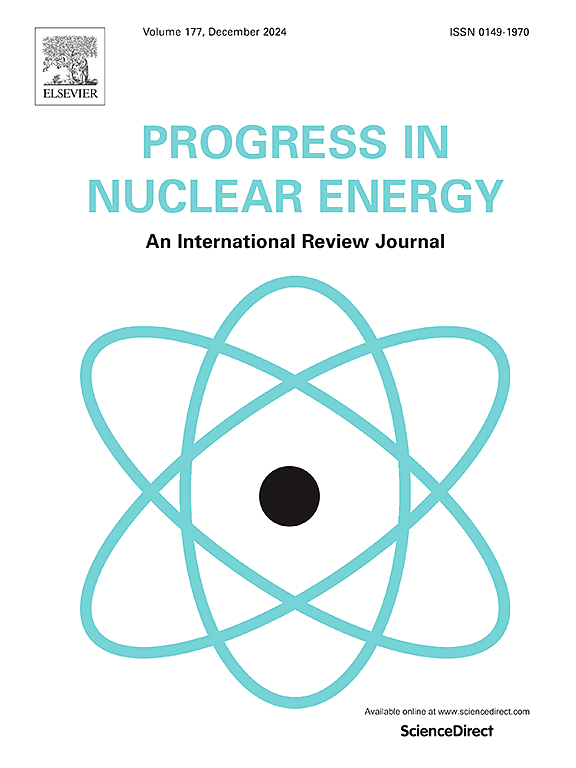Prediction of core unmeasurable parameters during loss of coolant accident using deep neural network method
IF 3.3
3区 工程技术
Q1 NUCLEAR SCIENCE & TECHNOLOGY
引用次数: 0
Abstract
The parameters within the reactor core would be categorized into two different groups of measurable and unmeasurable parameters. The determination of unmeasurable parameters, such as void fraction and critical heat flux, plays a significant and fundamental role in predicting the occurrence of accidents and emergency situations within the reactor. The utilization of deep neural networks represents one of the methods for accurate and reliable estimation of these parameters. Such estimations facilitate the implementation of necessary measures to prevent accidents or mitigate their consequences. In this study, three deep neural network models namely LSTM, TFT, and NBEATS are employed for void fraction prediction within the reactor core after Loss of Coolant Accident (LOCA). The neural network training will be performed without covariates, using past covariates and using future covariates. The results reveal that the TFT neural network, trained with future covariates (e.g. pressure, temperature, water velocity and steam velocity) yields the lowest error.
反应堆堆芯内的参数可分为可测量参数和不可测量参数两类。不可测量参数(如空隙率和临界热通量)的确定对于预测反应堆内事故和紧急情况的发生具有重要的基础性作用。利用深度神经网络是准确可靠地估算这些参数的方法之一。这种估算有助于实施必要的措施来预防事故或减轻事故后果。本研究采用了三种深度神经网络模型,即 LSTM、TFT 和 NBEATS,用于预测失去冷却剂事故(LOCA)后反应堆堆芯内的空隙率。神经网络训练将在不使用协变量、使用过去协变量和使用未来协变量的情况下进行。结果显示,使用未来协变量(如压力、温度、水速和蒸汽速度)训练的 TFT 神经网络产生的误差最小。
本文章由计算机程序翻译,如有差异,请以英文原文为准。
求助全文
约1分钟内获得全文
求助全文
来源期刊

Progress in Nuclear Energy
工程技术-核科学技术
CiteScore
5.30
自引率
14.80%
发文量
331
审稿时长
3.5 months
期刊介绍:
Progress in Nuclear Energy is an international review journal covering all aspects of nuclear science and engineering. In keeping with the maturity of nuclear power, articles on safety, siting and environmental problems are encouraged, as are those associated with economics and fuel management. However, basic physics and engineering will remain an important aspect of the editorial policy. Articles published are either of a review nature or present new material in more depth. They are aimed at researchers and technically-oriented managers working in the nuclear energy field.
Please note the following:
1) PNE seeks high quality research papers which are medium to long in length. Short research papers should be submitted to the journal Annals in Nuclear Energy.
2) PNE reserves the right to reject papers which are based solely on routine application of computer codes used to produce reactor designs or explain existing reactor phenomena. Such papers, although worthy, are best left as laboratory reports whereas Progress in Nuclear Energy seeks papers of originality, which are archival in nature, in the fields of mathematical and experimental nuclear technology, including fission, fusion (blanket physics, radiation damage), safety, materials aspects, economics, etc.
3) Review papers, which may occasionally be invited, are particularly sought by the journal in these fields.
 求助内容:
求助内容: 应助结果提醒方式:
应助结果提醒方式:


